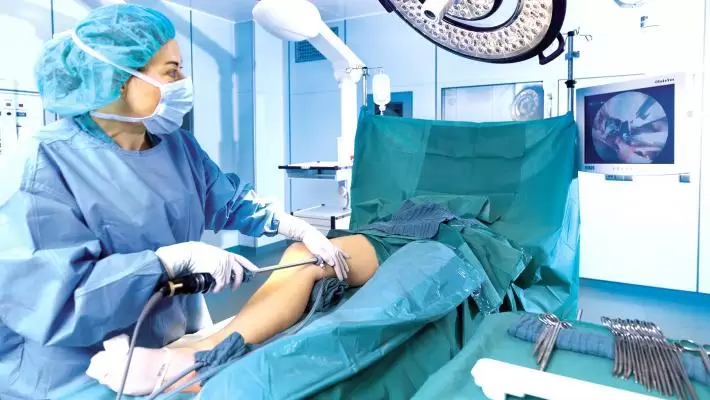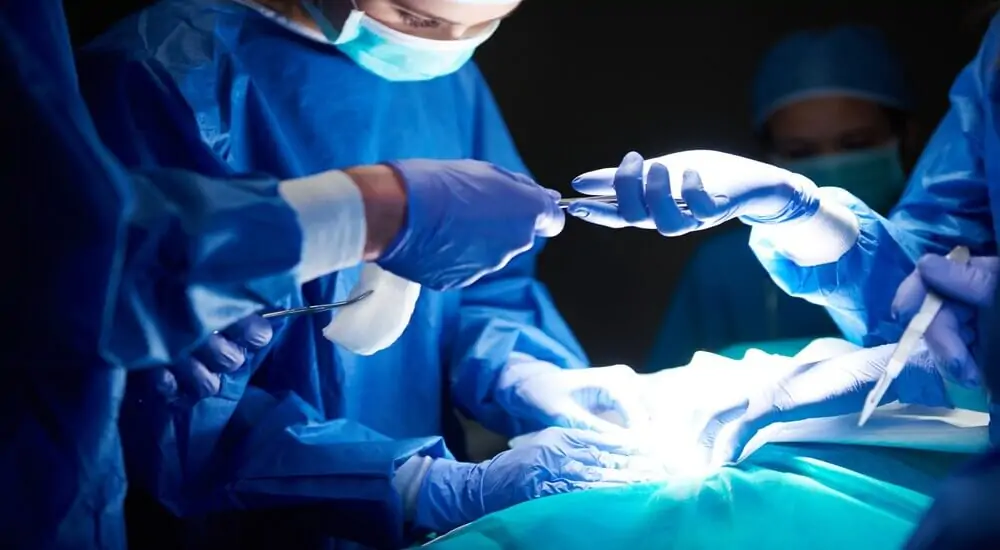
Vascular Deciency and the associated formation of varicose veins are one of the most common among cardiovascular diseases. Varicose veins occur in the veins, also known as veins, and are visible through the skin. The inability of the vein to fully perform its function may cause the formation of varicose veins. It is a problem that usually occurs in the veins that run from the legs to the ankles and provide blood transmission over a large area. Most of the time, the discoloration due to the formation of varicose veins in the veins seen in the calf and on the side may become more pronounced with swelling.
Varicose veins are a common problem in society and surgical procedure may be required in some cases for its treatment. In cases that significantly affect the patient’s quality of life, the opportunities provided by technology can be used for treatment purposes. It is possible to Decipher endoscopic surgical treatments among these. In this context, endoscopic vein surgery can be defined as a practical method that increases the patient’s comfort, can be easily applied and does not require a long recovery process.
Endoscopic vein surgery is a procedure for removing large satin data on both lower legs starting from the inner side of the ankle and extending to the femoral region by closed, i.e. endoscopic method. However, endoscopic vein surgery cannot be applied to every patient.
The veins in which large varicose veins are most often seen are the saphenous veins. The saphenous vein starts from the groin and reaches the inner part of the kneecap. From here it also extends behind the kneecap and towards the calf. It maintains circulation up to the ankle. By branching from the ankle to the fingers, the leg forms an important vascular network for blood circulation. Insufficiency that occurs in the saphenous veins can be a precursor to serious vascular diseases, especially varicose veins.
When a picture of venous insufficiency appears, different treatment options can be resorted to. The priority is always to treat the vein where it is located without removing it from the body with intravenous interventions. On the other hand, it may be necessary to remove the saphenous veins for different operations such as insufficiency or bypass in some patients. In the old surgical techniques, treatment was performed by opening an incision from the groin to the kneecap to remove the saphenous vein. Nowadays, endoscopic methods are preferred. Successful results can be achieved if it is applied by specialists and experienced cardiovascular surgeons in the field and the patient fully complies with the recommendations of his doctor during the recovery process.
How is Endoscopic Vein Surgery Performed?
Unlike the classical technique in the surgical methods previously used for saphenous vein removal, endoscopic vein surgery is used today. In the classical saphenous vein graft method, a long and deep incision was opened from the groin to the kneecap. In some methods, it might have been possible to make a surgical incision in a shorter area by creating a tunnel in the leg instead of opening an incision along the area where the vein continues. Endoscopic vein surgery, which is on the agenda as an alternative to the deep scarring and long healing period encountered in the classical method and the tunnel method, provides advantages in many ways.
In endoscopic vein surgery procedures, a deep and long incision is not required to remove the saphenous vein. Instead, an incision measuring only a few cm is opened in the leg and closed surgery is performed. The operation area is seen with a small camera through this incision and the procedure is completed. After the saphenous vein is removed, the incision is easily closed with a few stitches.
Endoscopic saphenous vein graft procedure is often preferred in the treatment of coronary bypass surgery and varicose veins. Thanks to this method, the vein that has not been damaged and has not lost its function can be easily removed and used in bypass surgery. It is possible to remove the varicose veins and the veins that need to be removed by the same method and to complete the patient’s varicose treatment.
Which Doctor To Go To For Endoscopic Vein Surgery?
You should consult a cardiovascular surgery specialist for endoscopic vein surgery. Cardiovascular surgery specialists who have been trained in vascular diseases and surgery have experience in procedures performed by endoscopic methods. If you are considering such a treatment, you can request detailed information and evaluation by making an appointment with a cardiovascular surgery specialist.
What Should Be Considered After Endoscopic Vein Surgery?
What should be considered after endoscopic vein surgery; It is very important to speed up the healing process, have a more comfortable process and prevent complications. The correct applications to be made in this process support the successful results of the surgery.
Wearing varicose veins socks after the surgical procedure helps to regulate blood circulation in the legs. It reduces swelling and edema. It contributes to the healing process by preventing blood from accumulating in the veins. It is usually recommended to use varicose veins socks for several weeks. You should definitely follow your doctor’s instructions on how long and how often the socks should be used. Improper use may have negative effects on circulation.
It is recommended that you continue your simple daily activities after the procedure. It is extremely important that you avoid staying still in bed for a long time. Because inactivity can increase the risk of deep vein clotting (deep vein thrombosis). Doing light exercises or even walking around the house increases the blood flow in the legs, reducing the risk of clots. However, be careful not to overdo it during activities. It is very important that you maintain a balance between rest and movement Decently.
It is normal to experience symptoms such as mild pain, bruising and redness after endoscopic vein surgery. These conditions usually occur in the treated area and decrease over time. Keeping the legs high can be useful in relieving pain, as it increases blood circulation. At the same time, compress applications also contribute to the reduction of swelling and tenderness. Do not neglect to regularly use painkillers or anti-inflammatory medications recommended by your doctor. If your complaints last longer than expected or worsen, be sure to consult your doctor.
It is recommended to walk at a moderate pace for 30 minutes every day for the first two weeks. Walking makes a great contribution to the healing process by increasing blood circulation in the legs. In addition, since walking is a light exercise, it Novates your leg muscles and prevents the formation of clots. Avoid intense exercises, but do not neglect regular walking. It is also important to choose comfortable shoes during walking and not to get too tired.
During the first week after endoscopic vein surgery, you should avoid lifting weights, heavy aerobic exercises, running, and activities such as a hot bath or hammam. The effect of hot steam or water may cause blood vessels to dilate in the area where the procedure is performed and may adversely affect the healing process. Heavy activities, on the other hand, can slow down recovery by putting too much strain on your legs. In this process, a balance should be achieved between light activities that will not strain the legs and rest Decently.
Keeping the incision sites clean after the procedure is very important to reduce the risk of infection. Jul. Immediately after the procedure, varicose veins are usually dressed in socks or an elastic bandage is applied. Do not forget to use the methods recommended by your doctor when cleaning the surgical area. In addition, you should avoid applying any cosmetic products or lotions to the incision sites. If you notice excessive sensitivity, discharge or redness in the incision area; contact your doctor without wasting time.
By paying attention to these recommendations, you can make the recovery process faster and more comfortable after endoscopic vein surgery. But every patient is different, and every surgical intervention is individual. Therefore, it is very important to follow the specific recommendations of your doctor and not to disrupt your routine check-ups. Don’t forget to stay in touch with your doctor for a healthy recovery process!

Working Hours
- Monday: 09:00 – 18:00
- Tuesday: 09:00 – 18:00
- Wednesday: 09:00 – 18:00
- Thursday: 09:00 – 18:00
- Friday: 09:00 – 18:00
- Saturday: 09:00 – 18:00
- Sunday: Closed
